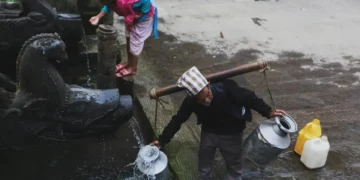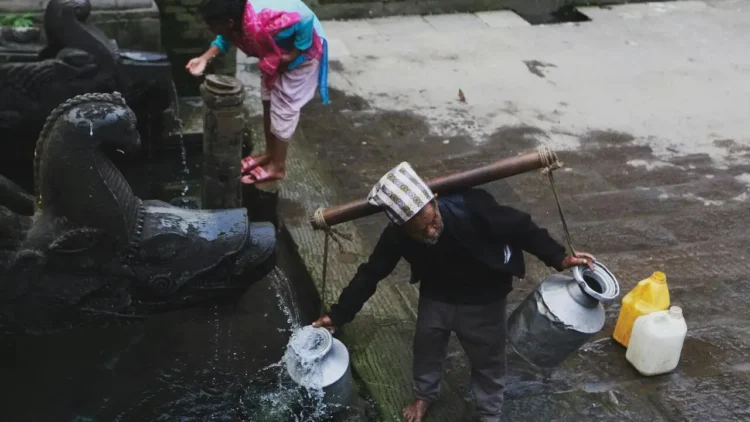Urban areas are the engines of economic growth and development, acting as the focal points for culture, commerce, and innovation. In India, the rapid urbanization over the past few decades has highlighted the need for substantial improvements in urban infrastructure and services. Recognizing this, the Government of India launched the Atal Mission for Rejuvenation and Urban Transformation (AMRUT) in June 2015, aiming to rejuvenate and transform urban spaces into well-planned, sustainable, and liveable cities. This article delves into how the AMRUT scheme is driving urban renewal by enhancing infrastructure and livelihoods across the nation.
The Objectives of AMRUT

Check Out BCCI Requests ICC to Relocate 2025 Champions Trophy Matches from Pakistan to Dubai or Sri Lanka
AMRUT aims to ensure that every household has access to a tap with an assured supply of water and a sewerage connection. The mission also focuses on developing greenery and well-maintained open spaces (e.g., parks) to enhance the well-being of citizens, reducing pollution by switching to public transport or constructing facilities for non-motorized transport, and building amenities in cities that are beneficial for the overall quality of life, especially for children, women, and the elderly.
Key Components of the AMRUT Scheme
- Water Supply: Ensuring universal water supply coverage is a primary focus. Projects under AMRUT aim to provide a robust water supply network to urban areas, reducing water wastage and ensuring a consistent supply to households.
- Sewerage and Septage Management: Developing sewerage infrastructure and proper septage management systems is crucial to improving sanitation and public health. AMRUT emphasizes the construction of new sewerage treatment plants and the rehabilitation of existing ones.
- Stormwater Drainage: Effective stormwater drainage systems are essential to manage urban flooding, a common issue in many Indian cities. AMRUT focuses on creating and upgrading drainage systems to mitigate the adverse effects of monsoon rains.
- Urban Transport: Enhancing urban transport systems, including the development of pedestrian-friendly pathways, cycling tracks, and efficient public transport, is a key component. This not only reduces traffic congestion but also lowers pollution levels.
- Green Spaces and Parks: The mission promotes the creation of green spaces, parks, and recreational areas. These spaces improve the urban environment, promote physical activity, and provide a respite from the bustling city life.
Achievements and Impact
Since its inception, AMRUT has initiated numerous projects across various Indian cities, yielding significant results. Here are some notable achievements:
- Water Supply Projects: Hundreds of water supply projects have been completed, significantly increasing the number of households with access to clean and reliable water.
- Sewerage Infrastructure: New sewerage treatment plants have been established, and existing ones have been upgraded, leading to better sanitation and a reduction in waterborne diseases.
- Urban Transport Initiatives: Cities like Ahmedabad and Pune have witnessed improvements in public transport systems, making them more accessible and efficient for daily commuters.
- Development of Green Spaces: Many urban areas have seen the development of new parks and green belts, providing citizens with much-needed recreational spaces.
- Improved Livelihoods: By improving infrastructure and providing better services, AMRUT has indirectly contributed to better livelihoods. Enhanced urban environments attract businesses, create jobs, and improve the quality of life for residents.
Challenges and Future Prospects
While AMRUT has made significant strides, challenges remain. These include the need for better coordination between various government agencies, the availability of adequate funding, and ensuring the sustainability of the projects. However, the successes achieved so far provide a strong foundation for future efforts.
The continued focus on urban renewal through AMRUT is essential for the sustainable development of Indian cities. By enhancing infrastructure and livelihoods, the mission is paving the way for a more inclusive and resilient urban future.
Urban renewal through AMRUT is not just about building infrastructure; it’s about transforming lives. By focusing on critical aspects like water supply, sewerage management, urban transport, and green spaces, the AMRUT scheme is creating cities that are efficiently equipped to meet the needs of the people. As India continues to urbanize, the success of AMRUT will serve as a blueprint for other urban development initiatives, ensuring that growth is both sustainable and inclusive.
In conclusion, the AMRUT mission stands as a testament to the power of strategic planning and execution in urban renewal. Its focus on enhancing infrastructure and livelihoods is driving a positive change, making Indian cities more liveable, sustainable, and prosperous for future generations.
To get more out of our exclusive news, Join us on our WhatsApp Channel, Facebook, X, and Instagram.















